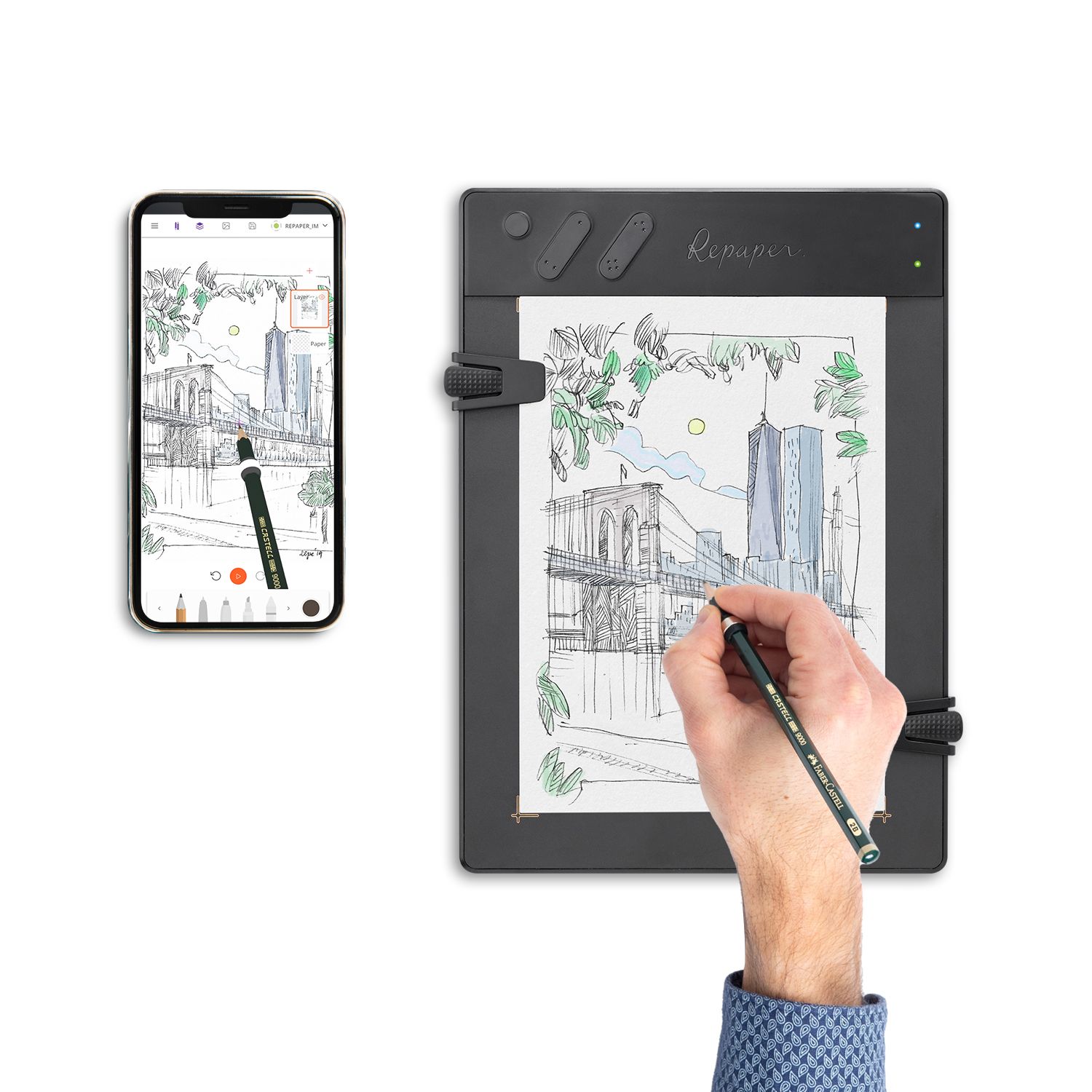
Why not be tempted by cheap graphics tablets?
Choosing a graphics tablet can quickly turn out to be a real headache when faced with all the models available today. One can therefore quickly be tempted to turn to the cheapest models, the latter providing the promise of being able to draw easily on a computer, in the same way as those of mid or high range. However, promises are only made to those who believe them, and you can quickly find yourself working on digital slates that lack fluidity, performance and ergonomics, far from the standards expected of the best graphics tablets. Find out below which tablet to invest in, and why you shouldn't succumb to the sirens of low prices.

What price to invest in a graphics tablet?
Graphics tablets without screens: the economical choice.
Of all the tablets on the market for drawing on a computer, designers, especially beginners, often consider buying a tablet without a screen. This is understandable, as there are countless of them available, and the price of tablets such as these can range from one to five times or more. Moreover, the use of a tablet without a screen seems easy at first sight, this device taking little space, and requiring only a connection with a laptop to function. However, even if one can be tempted to buy the cheapest on the market, the choice being overwhelming, one should not forget that not all tablets are equal. While most will be able to replace your mouse to control the cursor on your computer screen, the operating surface of a low-cost graphics tablet is likely to offer performance equivalent to the money you've invested. With low-pressure levels, inaccurate sensors, almost non-existent compatibility with popular software, and fragile components, the capabilities of a low-cost tablet won't live up to your expectations for proper drawing. So don't hesitate to make a financial effort for your purchase if you don't want to end up with a child's or dysfunctional tablet, especially since the use of tablets without a screen already requires you to learn hand-eye coordination, between the drawing area and the computer screen, in order to master it.


Drawing tablets with a screen: for professionals.
When you want to start drawing digitally, you start dreaming of the most powerful tablets, with an active surface and exceptional graphic sensitivity. A large tablet with an integrated, high-resolution screen, such as those used by graphic designers, can be a dream come true, but their excessive price, beyond the budget of the majority of people wishing to buy a graphics tablet, can easily lead us to go for inexpensive copies or more hybrid solutions such as multimedia tablets. For the latter, whether it's an Apple iPad Pro, a Samsung Galaxy Tab or a Microsoft Surface Pro, beyond the rather high price of this type of tool, they are not graphic tablets in the strict sense. Their line accuracy, their poor ergonomics and their poor software compatibility may disappoint you in the long run. Concerning tablets with entry-level screens, the whole point of investing in this type of device is, basically, to have exceptional quality. However, a low price cannot offer you the best components, and if you make this choice anyway, you will have to say goodbye to the IPS, Super AMOLED, or Full-HD LCD screen, as well as to the adapted brightness, and the consequent screen size. You lose all the advantages of a tablet with a screen, and the price-performance ratio may be disastrous.
The paper tablet: an attractive price-quality ratio.
For some time now, there has been a type of hybrid graphics tablet, which allows you to draw your sketches as if you were using a sketchbook, without having to look at a screen, thanks to a sheet of paper placed directly on the operating surface. It also allows you to do without a digitizer so that you can work on your drawing in your favorite software. The increased sensitivity levels, and the technology that detects the movements and the inclination of the pen, transmit the strokes made, live, to the favorite digital drawing application. A small tablet like this one, like the ISKN Repaper, allows you to benefit from the advantages of a tablet without a screen, being able to replace it thanks to the use of a classic pen, while having the comfort of drawing of a graphic tablet with a touch screen, with the added feeling of paper, and at a much lower price than the latter. They are now the best value for money for people looking for a versatile tablet, and make them the best tablet today for the beginner designer, not very comfortable with the world of graphic tablets, or for the professional looking for a rechargeable tablet, not needing a computer monitor thanks to the integrated storage space, to work on ideas on the go. In addition, the pen can be easily replaced by your favorite pencil, thanks to the magnetic ring to be placed around it, which allows you to increase your drawing comfort even more, all at a price equivalent to mid-range tablets without a screen.

Entry-level tablets: a bad idea.
Technologies that are lagging behind.
As we have seen, among the different types of graphics tablets on the market, when we choose to turn to entry-level devices, we can end up with tablets whose active area of the drawing surface is not up to expectations in terms of pressure level, whose styluses are not very ergonomic, and worse, whose RAM does not allow for smooth work on the computer. If we add to this the sometimes outdated technologies, requiring the purchase of adapters and other additional costs, such as the lack of a wireless connection, more frequently used connectors, or the lack of internal memory, it will finally cost you more to use a low-end graphics tablet at the same price as the best mid-range tablets.
A software compatibility that is not satisfactory.
When you buy a graphics tablet, if the mid-range and high-end ones are almost automatically compatible with any operating system, and with all the most popular software, this is not necessarily the case for entry-level devices. It is therefore important to check whether your future purchase will be able to run under Windows and Mac OS, and why not under Android or iOS. After that, the minimum is that your graphic tablet should be compatible with the main graphic creation software, such as the Adobe suite, including Adobe Photoshop, Illustrator or Lightroom for photo editing, but also with free software such as Gimp, Inkscape, Krita, ... The problem that you may encounter with a cheap tablet is to spend long hours to find and install the drivers necessary to work with your different operating systems and graphic software. So don't neglect compatibility, and a few extra euros will save you a lot of trouble if you want to start using a new software.

A lack of options that is very noticeable.
The last point to look at in order to make the best choice, when buying a graphics tablet, is the type of additional options integrated into it. Whether it's the number of customizable and programmable shortcuts, connectivity, the availability of a USB port, Bluetooth, etc., the comparison between a mid- or high-priced tablet and one at a very low price is quickly made: those at low prices generally have no additional options. The handling then becomes basic, and it becomes complicated to work efficiently with it in the long run.
I don't have an unlimited budget, what can I do?
The point here is not to tell you that a graphics tablet needs to cost thousands of dollars to get a decent performance. No, not everyone can invest in a new tablet with an integrated high-definition screen for several hundred dollars. To make sure you make the right choice, you can turn to a buying guide like hundreds on the Internet, and you will probably find an affordable tablet within your budget, and allowing you to make your graphic designs. If you are a beginner in the world of graphic tablets, turning to "paper tablets" may be a solution. With a paper tablet, you can continue to draw on standard paper with your favourite pencils, while having the possibility to save your work on your computer and work on it with a pen, just like with a tablet without a screen.


Discover more
Comparison of the best graphics tablets.
When it comes to buying a drawing tablet that doesn't require hand-eye coordination, with the strokes taking shape directly in front of your eyes, as they would on a notebook or a conventional drawing pad, you can quickly get lost in front of the large number of devices available on the market.
Graphics Tablet Tutorial: How to get started?
When you want to start making digital drawings or retouching images on a regular basis, there is an indispensable tool in the daily life of a draftsman, illustrator, graphic artist or designer: the graphic tablet
Digital arts: a glimpse of an up-and-coming discipline
Digital art is a generic term used to describe in a common way all the forms of arts calling upon computer or electronic tools, artificial intelligences, and in a general way to all the artistic productions related to sciences and technologies.
Newsletter
Keep up to date with iskn news and events
Free standard delivery
for purchase over €80
30-day returns
on all products
Secure payment
with Stripe & PayPal
Pay in 3
with Alma
Customer service
chat with us


